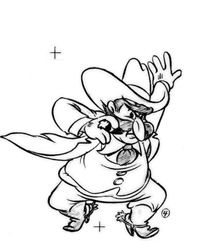there Character animators add second or 3D or in dimensions nonetheless to be discovered, transfer life to talking rabbits, performing arts hippos, humanlike cars, near-sighted fish, and a lot of dysfunctional families than you'll be able to shake a stick at. The principles of animation, as well as stretch and squash, weight, anticipation and overlapping action, were absolutely developed (largely at the film producer studio) by 1942. Since then, character Associate in Nursingimators have applied these principles to comes with an infinite quantity of rhetorical variation, from full animation to low take into account the online or TV. The character animator could be a skilled worker, accumulating expertise and experience over the courses of a career and a time period.
What quite coaching and skills will a personality animator got to begin out and alos to stay advancing in their career? Feature animator Travis Blaise (Brother Bear), advises beginning with the grass roots. “Try to attend a college that teaches the basics (figure drawing, painting, sculpting, art history) in conjunction with ancient animation.” TV animator and director Jim Petropolis adds, “If you learn nothing else, learn the way to draw a correct human figure”.
It is additionally vital to grasp storytelling, continuity, and acting. It’s reduced to analysis technical “how-to-animate” books and a lot of helpful to seek out books on your favorite artists or illustrators. it's higher to develop your own voice and its simple to urge stuck invigorating the method everybody else will.
What area unit The Daily Duties Of a personality Animator?
TV Associate in Nursingimator Justin Simonich answers: “ As an animator you’re liable for any scene given to you by the director, invigorating any characters assigned to you, and handing it by the point. The point is paramount; you have got to figure during a fast, nonetheless deliberate manner.
The daily duties of a personality animator usually transcend their job descriptions. Jim Petropolis feels that when you’re during a loop, expect to wear several hats at the same time. “Over time you’ll in all probability be asked to try to to one thing totally different than what you may have heretofore been aware of.
Character animators, whether or not they add second or 3D, got to continue with technology to remain employable. to remain current with technology, scan articles regarding new package and take a look at them out. If you see a cool look or impact on TV, attempt to imitate it with Flash and when Effects. It helps you build Associate in Nursing arsenal of designs and appears.
What quite coaching and skills will a personality animator got to begin out and alos to stay advancing in their career? Feature animator Travis Blaise (Brother Bear), advises beginning with the grass roots. “Try to attend a college that teaches the basics (figure drawing, painting, sculpting, art history) in conjunction with ancient animation.” TV animator and director Jim Petropolis adds, “If you learn nothing else, learn the way to draw a correct human figure”.
It is additionally vital to grasp storytelling, continuity, and acting. It’s reduced to analysis technical “how-to-animate” books and a lot of helpful to seek out books on your favorite artists or illustrators. it's higher to develop your own voice and its simple to urge stuck invigorating the method everybody else will.
What area unit The Daily Duties Of a personality Animator?
TV Associate in Nursingimator Justin Simonich answers: “ As an animator you’re liable for any scene given to you by the director, invigorating any characters assigned to you, and handing it by the point. The point is paramount; you have got to figure during a fast, nonetheless deliberate manner.
The daily duties of a personality animator usually transcend their job descriptions. Jim Petropolis feels that when you’re during a loop, expect to wear several hats at the same time. “Over time you’ll in all probability be asked to try to to one thing totally different than what you may have heretofore been aware of.
Character animators, whether or not they add second or 3D, got to continue with technology to remain employable. to remain current with technology, scan articles regarding new package and take a look at them out. If you see a cool look or impact on TV, attempt to imitate it with Flash and when Effects. It helps you build Associate in Nursing arsenal of designs and appears.



.gif)



.gif)

